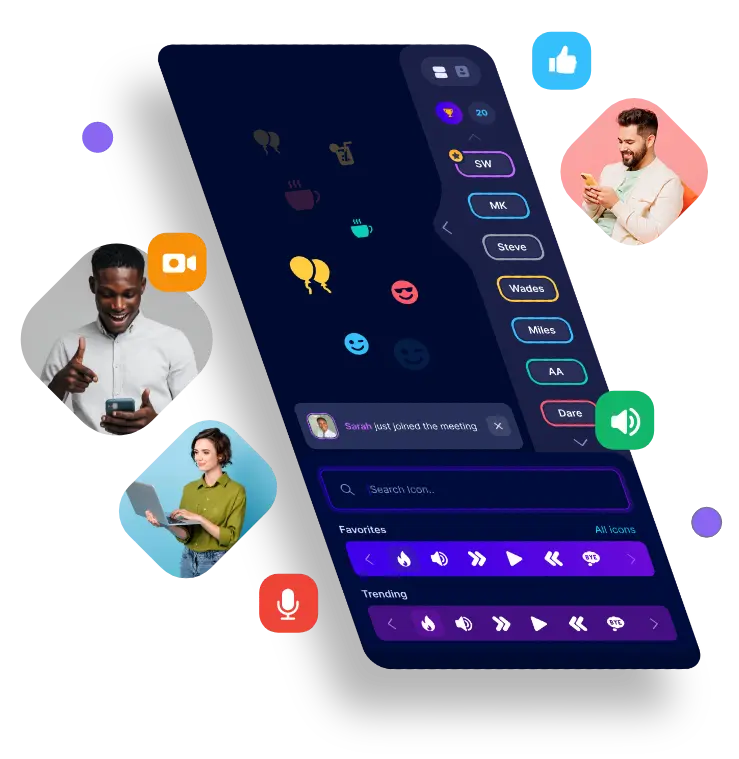
In today's dynamic work landscape, remote work has become more prevalent than ever before. With this shift, the importance of feedback in a remote environment cannot be overstated.
Understanding the different types of feedback, from positive reinforcement to constructive criticism, is crucial for fostering growth and improvement.
This article explores how to give and receive effective feedback in a remote setting, common challenges, and solutions, as well as best practices for creating a feedback culture within a remote team.
Join us as we delve into the art of feedback in a remote environment.
Understanding the Importance of Feedback in a Remote Environment
Understanding the Importance of Feedback in a Remote Environment is crucial for promoting effective communication and team cohesion.
When teams operate remotely, the lack of face-to-face interaction can sometimes hinder the natural feedback flow that occurs in traditional office environments. However, feedback in remote work settings holds immense value as it serves as a tool for enhancing team dynamics, improving communication skills, and cultivating leadership qualities.
According to the Forbes Human Resources Council, regular and constructive feedback in remote teams helps employees feel connected, engaged, and motivated. It enables individuals to understand their strengths and areas for development, leading to self-improvement and overall team progress.
In real-world scenarios, companies like Buffer and Zapier have successfully implemented feedback mechanisms to enable their remote teams. By providing timely and specific feedback, these organizations have fostered a culture of openness and growth, significantly impacting employee morale and performance.
Zoom meeting engagement through gamification has been our focus at Townhall, and why we've designed our Zoom engagement-boosting app solution.
Types of Feedback in a Remote Environment
In a remote work setting, different types of feedback, including positive feedback, constructive criticism, and performance evaluations, play a vital role in shaping team dynamics and improving teamwork.
Positive feedback serves as a powerful tool for boosting morale and motivation among remote team members. Recognizing and appreciating the efforts and achievements of individuals not only encourages them but also cultivates a sense of belonging and recognition within the virtual workspace.
On the other hand, constructive criticism provides valuable insights for improvement and development. When delivered in a respectful and supportive manner, constructive feedback can help individuals address weaknesses, refine their skills, and grow professionally.
Furthermore, performance evaluations offer a structured approach to assessing individual and team progress. By setting clear goals, evaluating performance metrics, and providing specific feedback, remote teams can align their efforts towards achieving common objectives and enhancing overall productivity.
Positive Feedback
Positive feedback is an essential tool in remote work environments, providing team members with recognition and motivation for their individual growth and contributions.
It plays a crucial role in boosting morale, especially in virtual settings where face-to-face interactions are limited. Acknowledging employees' hard work and achievements through positive feedback helps them feel valued and appreciated, thus increasing their job satisfaction and overall engagement. Regular doses of encouraging words not only boost productivity but also contribute to creating a positive work culture.
By recognizing individual efforts and highlighting successes, positive feedback fosters a culture of appreciation and growth within the team. This creates a supportive environment where employees feel motivated to strive for excellence and continuously improve. For example, a simple 'great job on the client presentation' or 'thank you for your quick response' can go a long way in reinforcing positive behaviors and enhancing team dynamics.
Constructive Criticism
Constructive criticism is an integral part of remote work feedback mechanisms, where managers can leverage personalized video feedback delivery for effective communication and skill development.
By embracing constructive criticism in virtual work settings, individuals can hone their abilities through targeted feedback that fosters growth and improvement. This type of critique not only highlights areas for enhancement but also provides actionable steps for professional development.
Managers play a crucial role as mentors, guiding their team members toward success by offering insightful evaluations and support. Personalized video feedback emerges as a modern and dynamic tool for creating a connection in remote work setups, ensuring that feedback is constructive and impactful.
Performance Evaluations
Performance evaluations in remote work settings focus on providing goal-oriented feedback using technology-driven solutions to assess individual and team performance effectively.
Implementing a structured approach to performance evaluations is crucial for remote teams to ensure continuous growth and improvement. By setting clear objectives and milestones, employees can align their efforts with the company's strategic goals and enhance their overall performance. Read our post on Navigating Growth Challenges in Mid-Sized Remote Companies.
Leveraging tools like the Teemyco Virtual Office enables managers to conduct regular assessments and monitor progress in real time. This not only fosters accountability but also allows for timely feedback that can address any issues or challenges promptly.
How to Give Effective Feedback in a Remote Environment
Providing effective feedback in a remote environment requires leveraging appropriate communication tools and adopting a constructive approach to ensure clear and impactful communication.
One key strategy to consider when giving feedback in virtual settings is the use of real-time messaging platforms and video conferencing tools to facilitate immediate discussions and clarifications. By incorporating screen-sharing features during feedback sessions, team members can visually understand the points being made, creating a more engaging and interactive experience.
An empathetic approach is essential in virtual feedback delivery. Acknowledging the challenges of remote work and demonstrating an understanding of recipients' perspectives can enhance trust and openness in communication.
Clarity is paramount in remote feedback. Clearly outlining specific areas of improvement, and actionable steps, and providing examples of successful practices can guide individuals on how to enhance their performance effectively.
Be Specific and Timely
When giving feedback in a remote environment, it is crucial to be specific and timely, ensuring that remote employees receive constructive input consistently and with a regular cadence.
Specific feedback helps remote employees understand what is working well and what areas need improvement. By providing concrete examples and actionable suggestions, employees can better grasp how to enhance their performance.
Timely feedback is essential as it allows individuals to address issues promptly, preventing them from becoming ingrained habits. Establishing a regular cadence for feedback sessions creates a sense of accountability and progress tracking within the remote team. It fosters a culture of continuous improvement and encourages open communication.
Use the Right Communication Tools
Selecting the right communication tools is essential for giving feedback in a remote environment, ensuring seamless interactions and regular feedback sessions with team members.
In terms of remote feedback delivery, utilizing platforms such as Slack, Microsoft Teams, Zoom, or Google Meet can greatly facilitate effective communication. Slack offers real-time messaging and file sharing, while Microsoft Teams integrates seamlessly with Office 365 for a comprehensive collaboration experience.
Zoom meeting engagement through gamification has been our focus at Townhall, and why we've designed our Zoom engagement-boosting app solution.
Video conferencing tools like Zoom and Google Meet allow face-to-face interactions, making feedback conversations more personalized and engaging. It's vital to consider the team's tech proficiency and communication style when selecting the most suitable tool for feedback delivery.
Focus on the Behavior, Not the Person
When giving feedback in a remote work setup, it is essential to focus on addressing behaviors rather than criticizing the individual, utilizing personalized video feedback and effective communication methods.
By directing attention towards specific actions and patterns, remote feedback sessions can be more productive and growth-oriented. Constructive criticism fosters an environment where employees can learn and improve, without feeling attacked or demotivated. Tailored communication methods, such as adapting language and tone to suit each individual's preferences, can significantly impact how feedback is received.
Employing personalized video feedback can add a human touch to virtual interactions, helping to convey nuances that might be missed through text alone. When feedback is delivered in a manner that focuses on improvement rather than fault-finding, it promotes a culture of continuous learning and development within remote teams.
Offer Solutions and Suggestions
In remote work scenarios, providing feedback should not only identify areas for improvement but also offer practical solutions and actionable suggestions, leveraging project management systems for effective implementation.
By incorporating solutions and suggestions into feedback mechanisms in virtual work setups, organizations can enable their teams to actively work on enhancing their skills and refining their processes. This approach fosters a culture of continuous improvement and professional growth, ultimately leading to higher productivity and performance levels.
Utilizing project management systems for tracking feedback outcomes not only streamlines the process but also enables managers to monitor progress and address issues in real time. Tracking suggested solutions within these systems ensures that implemented changes are monitored and evaluated for their impact on overall performance levels.
How to Receive Feedback in a Remote Environment
Receiving feedback in a remote environment requires an open-minded approach to accepting constructive input, followed by reflective practices and proactive implementation of suggested changes.
One effective strategy is to view feedback as a valuable tool for growth rather than criticism. Engaging in productive self-reflection helps individuals assess the feedback objectively and identify areas for improvement.
- Setting regular feedback sessions with team members or supervisors is crucial in a virtual work setup. These discussions promote open and honest communication, laying a foundation for continuous improvement.
- Creating an action plan based on received feedback reinforces commitment to personal and professional development. Break down larger suggestions into smaller, achievable tasks to see tangible progress.
- Utilizing technology for feedback sharing and tracking can streamline the process and ensure nothing falls through the cracks. Online platforms and tools offer convenient ways to give and receive feedback efficiently.
Be Open-minded and Accepting
To receive feedback effectively in a remote work environment, it is essential to maintain an open-minded and accepting attitude, fostering positive team chemistry and continuous improvement.
Cultivating an open-minded approach allows remote team members to value various perspectives and ideas, leading to enhanced problem-solving and innovation. When individuals embrace feedback constructively, they not only showcase their willingness to adapt and learn but also contribute to a collaborative team environment where everyone feels valued and supported.
For instance, envision a virtual team where team members engage in respectful discussions, provide thoughtful feedback on each other's work, and encourage one another to explore new ways of doing things. In such a scenario, feedback becomes a tool for personal and collective growth, driving team performance to new heights.
Ask for Clarification and Examples
When receiving feedback in a remote work environment, it is beneficial to seek clarification and request specific examples to enhance understanding and establish effective feedback loops for continuous improvement.
Clear communication channels are essential for remote workers to engage in productive feedback exchanges. Seeking clarification aids in deciphering vague comments and unlocking actionable insights to refine performance. By urging for specific examples, employees grasp granular details essential for meaningful adjustments.
One effective strategy is initiating open dialogues with supervisors or peers to ensure a comprehensive comprehension of the feedback received, fostering an environment conducive to growth. Through this proactive approach, remote employees can address concerns effectively and refine their work approach for enhanced productivity and performance.
Take Time to Reflect and Implement Changes
After receiving feedback in a remote environment, it is essential to take time to reflect on the input received and proactively implement the suggested changes to foster personal and professional growth.
Self-reflection plays a crucial role in remote work settings, allowing individuals to analyze their actions and behaviors objectively. Engaging in continuous improvement through reflection not only enhances one's skills but also contributes to overall team success. To effectively reflect, employees can journal their thoughts, review their work regularly, and seek input from colleagues. Embracing feedback as a tool for development, individuals can set specific goals based on the input received and actively work towards achieving them. Pairing this reflection with iterative adjustments and open communication can lead to a culture of growth and innovation in virtual work environments.
Common Challenges and Solutions for Giving and Receiving Feedback in a Remote Environment
Navigating the challenges of giving and receiving feedback in a remote environment involves addressing obstacles such as lack of non-verbal cues, time zone differences, technical difficulties, and the need to establish trust and rapport among team members.
Communication barriers are a common struggle in remote feedback exchanges. Finding ways to convey emotions and intentions effectively without the aid of facial expressions or body language can be daunting. One approach to mitigate this challenge is to encourage the usage of video calls or online conferencing tools, allowing for face-to-face interactions and a better understanding of tone.
Building trust within virtual teams is vital for constructive feedback. Cultivating transparency, active listening, and consistent follow-ups can foster a trusting environment where feedback is seen as a tool for growth rather than criticism.
Lack of Non-verbal Cues
One of the challenges in remote feedback is the absence of non-verbal cues, which can impact the interpretation and effectiveness of communication methods, emphasizing the need for clarity and explicitness in remote interactions.
When relying solely on verbal cues, misunderstandings can easily arise due to the lack of visual context. To mitigate this limitation, clear and concise language becomes paramount in virtual feedback sessions. Utilizing structured frameworks such as bullet points or checklists can help maintain a focused dialogue and ensure all key points are addressed.
Leveraging technology tools like video conferencing platforms or screen sharing enhances the feedback process by allowing for real-time demonstrations and explanations. Encouraging active participation through open-ended questioning and reflective listening also fosters a deeper understanding between remote feedback providers and recipients.
Time Zone Differences
Time zone variances pose a challenge in remote work feedback exchanges, requiring coordinated scheduling and flexible collaboration strategies to accommodate diverse geographical locations and ensure timely communication.
When teams are spread across different time zones, it becomes crucial to establish a proactive feedback framework that considers the availability windows of all members. Proactive scheduling not only ensures that feedback sessions are held at mutually convenient times but also promotes a culture of respect for each team member's work-life balance.
To enhance communication effectiveness, it is recommended to leverage adaptive collaboration methodologies that allow for asynchronous feedback mechanisms. By utilizing tools that enable team members to leave feedback and responses outside of real-time meetings, feedback loops can remain active and inclusive, regardless of time zone disparities.
Fostering a culture of transparency and accountability within the team is essential when navigating time zone challenges. Clear communication regarding feedback expectations, deadlines, and processes can help manage expectations and promote a sense of unity and shared responsibility among team members.
Technical Difficulties
Technical glitches and connectivity issues can hinder feedback delivery in remote work environments, necessitating reliance on stable technology platforms and contingency plans to ensure seamless communication and feedback exchanges.
One common challenge faced during remote feedback sessions is the unpredictability of internet connections, which can lead to audio or video disruptions. It is crucial to utilize high-speed internet connections and encourage participants to find a quiet, well-lit space for better communication. Having a backup communication channel, such as a phone call or a secondary software platform, can help maintain engagement in case of technical difficulties. Ensuring that all participants have access to necessary tools and are familiar with the technology beforehand can also reduce the risk of interruptions.
Establishing Trust and Rapport
Building trust and rapport is essential for effective feedback exchanges in remote work environments, fostering a collaborative atmosphere and enhancing team chemistry for productive interactions.
One key strategy to cultivate trust among team members in remote settings is through regular and transparent communication. Keeping everyone updated on team progress, challenges, and successes helps in building a sense of unity and shared purpose. Encouraging active listening and showing empathy toward colleagues' perspectives can also strengthen bonds and foster a supportive environment for honest feedback.
Best Practices for Creating a Feedback Culture in a Remote Team
Establishing a robust feedback culture in a remote team involves encouraging regular check-ins, conducting one-on-one meetings, and providing opportunities for peer feedback to enhance communication and collaboration.
Regular check-ins establish a sense of connection and accountability among team members, ensuring everyone is aligned and informed about ongoing projects and individual progress.
One-on-one meetings serve as valuable platforms for in-depth discussions, addressing specific challenges, and setting personalized goals. By fostering an environment where peers can provide constructive feedback to each other, remote teams create a culture of continuous improvement and mutual support.
These practices not only boost teamwork but also nurture individual growth, leading to higher job satisfaction and performance.
Encourage Regular Check-ins and One-on-One Meetings
Regular check-ins and one-on-one meetings are instrumental in promoting effective feedback exchanges within remote teams, fostering individual growth and team cohesion through personalized interactions.
By maintaining a consistent schedule of check-ins, team members can feel supported and connected, even in the virtual landscape. These interactions serve as crucial touchpoints for leaders to understand their team's progress, challenges, and needs.
One-on-one meetings allow for deeper discussions, offering a platform for confidential conversations that address specific concerns or offer praise in a more private setting.
These personalized interactions help in clarifying goals and expectations, aligning individual objectives with team objectives, thus enhancing overall productivity.
When structuring one-on-one sessions, it is essential to prioritize active listening, establish a safe space, and provide constructive feedback that is actionable and growth-oriented.
Provide Opportunities for Peer Feedback
Facilitating peer feedback mechanisms in remote teams through collaboration tools like the Teemyco Virtual Office promotes a culture of mutual support, learning, and continuous improvement among team members.
Peer feedback plays a crucial role in remote team dynamics as it allows team members to exchange valuable insights, offer suggestions for improvement, and validate each other's work. Utilizing a platform like the Teemyco Virtual Office not only streamlines the feedback process but also fosters a sense of belonging and camaraderie within the team.
Implementing effective peer feedback systems involves creating clear guidelines for giving and receiving feedback, setting goals for improvement, and ensuring that feedback is delivered constructively. Encouraging open communication and creating a culture that values feedback can significantly contribute to professional growth and team success.
Lead by Example and Be Open to Feedback Yourself
Leading by example and demonstrating openness to feedback is essential for managers in remote teams, setting a positive tone for constructive communication and fostering a culture of continuous learning and growth.
Managers play a crucial role in shaping the feedback dynamics within distributed teams. By actively seeking feedback from their team members, they not only show receptivity to diverse viewpoints but also encourage a transparent and collaborative environment. Embracing suggestions for improvement showcases a willingness to evolve and adapt, reinforcing the idea that feedback is a catalyst for growth. By exemplifying a commitment to personal and professional development, managers inspire their team to strive for excellence and engage in self-reflection.
Frequently Asked Questions
What is the importance of mastering the art of feedback in a remote environment?
Mastering the art of feedback in a remote environment is crucial for effectively managing remote teams, improving communication and collaboration, and maintaining a positive work culture.
How can I give constructive feedback in a remote environment?
When giving feedback in a remote environment, it is important to be specific, provide examples, and focus on the behavior or performance rather than the individual. It is also helpful to offer suggestions for improvement and follow up with the recipient.
What are some effective ways to receive feedback in a remote environment?
In a remote environment, it is important to actively listen and ask for clarification or examples if needed. It can also be helpful to reflect on the feedback and take time to process it before responding.
How can I ensure that my remote team members feel comfortable giving and receiving feedback?
To create a safe and open feedback culture, it is important to establish trust and open communication within the team. Encourage regular check-ins and create a feedback process that is fair and transparent for everyone.
What are some challenges of giving feedback in a remote environment?
One challenge of giving feedback in a remote environment is the lack of non-verbal cues, which can make it difficult to accurately convey tone and intentions. It can also be challenging to schedule and conduct feedback sessions in different time zones.
How can I incorporate feedback into remote team meetings?
Incorporating feedback into remote team meetings can be done by setting aside time for open discussions and reflections, and encouraging team members to share their thoughts and suggestions. It is also helpful to follow up on feedback from previous meetings to track progress and improvements.



